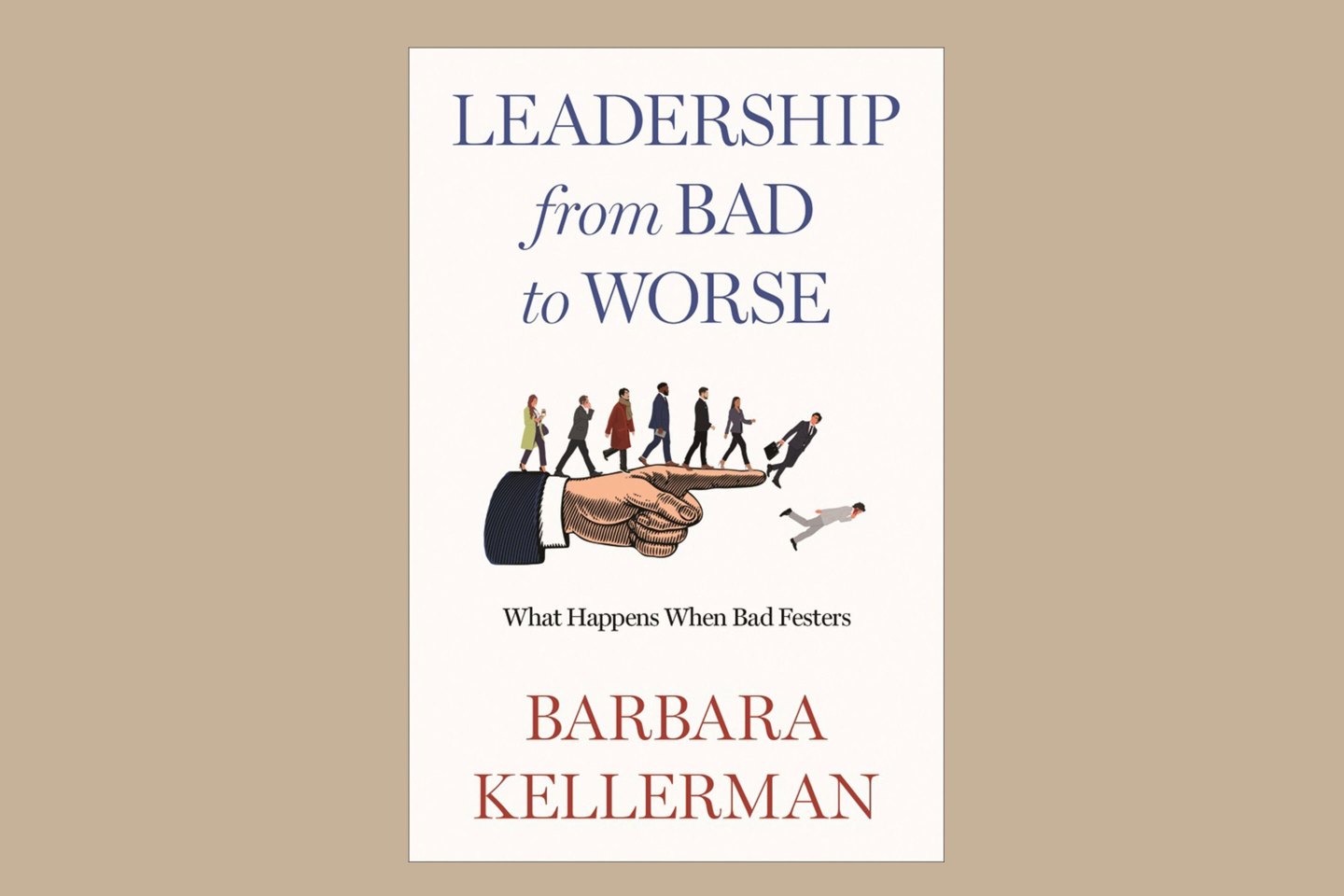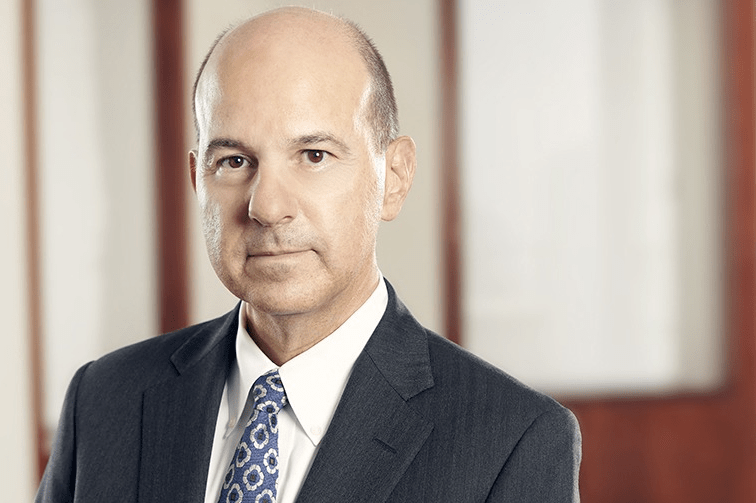The excerpt below reflects my book, Leadership From Bad to Worse, which, atypically, is not about how to develop good leaders but how to stop bad ones. It’s a skill we ignore at our peril.
Bad leadership and its conjoined twin, bad followership, are as ubiquitous as they are pernicious. They are everywhere: in business and government, in religion and education and in the military, in democracies as well as autocracies.
But despite the pervasiveness and balefulness of bad leadership, our will to stop or at least slow bad leaders, and our skill at doing so, remains meager. There are some theories that explore the dark side of the human condition. And there are some practices that bring bad leaders down. But the work pales in comparison with the magnitude of the problem. Leaders who act largely or even entirely in their self-interest, as opposed to in our interest, the public interest, are part of everyday life.
Bad leadership is a social disease—or, if you prefer, a sociological one. But unlike diseases that are physical or psychological, bad leadership remains at the margins of our collective concerns. We fret about it; sometimes we even fixate on it. However, we think long and hard about bad leaders only when they directly affect us, such as a callous manager, inept administrator, corrupt mayor, greedy chief executive officer, or feckless president. But precisely because we fail to see bad leadership as an affliction affecting the human condition, we continue to suffer it not so much in silence as in ignorance.
Cancer has been studied for decades, which is why more people now survive it than ever before. Similarly, great progress has been made in tackling schizophrenia. New antipsychotic drugs come on the market all the time, and brain research has markedly advanced our understanding of the roots of mental illness.1 There have been, in short, massive investments over a period of many years that have advanced our ability to address diseases such as these. But no such luck with what should be considered a different sort of plague, bad leadership.
I have no illusions. This book is a drop in a near-bottomless pit. But a drop is not nothing. It is something. The book then serves two purposes. First, to further our theoretical understanding of how bad leadership and followership, and then worse leadership and followership, happen. Second, to have a practical impact on mitigating them, especially early on. We now know that the longer and deeper bad digs in, the harder it is to uproot. Therefore, when we break bad leadership and followership into phases— each worse than the one before—their progression will be easier to predict and detect, and therefore easier to stop or at least slow before they turn toxic.
Ideally, we would have a checklist. A list of how to know when a leader begins to go bad and what specifically to watch for. Checklists and lists have long proved useful. There was one in my book Hard Times: Leadership in America, where I chronicled what you need to know about America if you want to lead in America. Historian Timothy Snyder had a list in his small, influential treatise On Tyranny: Twenty Lessons from the Twentieth Century.² And diplomat Richard Haass compiled one for his book The Bill of Obligations: The Ten Habits of Good Citizens.³ In The Checklist Manifesto: How to Get Things Right, author Atul Gawande points out that precisely because they are so simple, checklists are reliably helpful.⁴ They provide an easy, efficient way of managing enormous amounts of information and of decoding complex contexts.
But is a list of what to know and how to respond reasonable or even feasible in the case of bad leadership? For we are dealing here not with a single individual but with a system—the leadership system, which has three separate and equally important parts: leaders, followers, and contexts. This means the variables are almost infinite. For that reason, what would be considered bad leadership in one context or culture or circumstance is not necessarily bad leadership in another. As a general principle, then, hard and fast rules do not here apply, nor is there a handy-dandy guide to indicate when things begin to go wrong or what steps to take when they do.
Still, disclaimers notwithstanding, I cannot not try to fix some of what’s broken. We promote good leadership not by ignoring bad leadership, nor by presuming it immutable. To the contrary, our only hope is to take it on, to decode and decipher it, and then to attack it as we would any disease that damages, debilitates, and sometimes even destroys.
[I conclude], then, with a list. A list of twelve steps to take to forestall or, if necessary, interrupt an otherwise inexorable process. How? By educating and training us to detect and attack bad leadership early on. Why? Because leaders who go bad nearly never self-correct. Because this leaves followers—or, on occasion, other leaders—to do the heavy lifting, the course-correcting. Because if they do not, they all become bystanders. Because if they do not, they all become complicit. Because if they do not, they all become enablers. Because if they do not, they all become bad.
I have written before about intervening when things go wrong. Even earlier in this book I highlighted one of my axioms: “To oppose a leader who is bad—ineffective and/or unethical—is to be a good follower.” Nor am I the only one to prompt people to prevent and, if necessary, to confront bad. I already mentioned the work of Stanley Milgram and Philip Zimbardo. More recently, in his book Complicit: How We Enable the Unethical and How to Stop, psychologist Max Bazerman suggests how to be “less complicit” when things go wrong, such as acknowledging your blind spots.⁵ Additionally, a few people, like Snyder and Haass, make plain what people can and should do to defend against bad leaders, to be not just reactive but proactive.
My twelve steps bear some resemblance to other action steps that preceded them, but not much. For mine are intended to be not general but specific. The purpose of this list is particularly to provide ideas, information, and instructions on how to know when bad leadership threatens, and on what to do when it happens.
Step 1: Pay attention to the distinction between good and bad. Between a good leader and a bad one—and between a good follower and a bad one.
Step 2: Pay attention to the distinction between bad as in unethical and bad as in ineffective.
Step 3: Pay attention to the leader. The leader’s nature and character, beliefs and behaviors, preferences and proclivities, style and substance, friends and enemies.
Step 4: Pay attention to everyone else. If you’re thinking of challenging a bad leader, remember that some people might be your allies, others might be your opponents or even your enemies, and still others are nearly certain to remain neutral.
Step 5: Pay attention to the context. Be contextually conscious. Contextually informed. Contextually intelligent.
Step 6: Know that to oppose a bad leader is generally to do the right thing.
Step 7: Know that not to oppose a bad leader is generally to do the wrong thing.
Step 8. Don’t be impetuous. Assess your risks, Weigh the costs and benefits of doing something to take on a bad leader versus the costs and benefits of doing nothing. Similarly, weigh the costs and benefits of doing one thing to challenge a bad leader versus the costs and benefits of doing another.
Step 9: Don’t be reckless. Some bad leaders are dangerous and must be handled with care—or maybe not at all. Other bad leaders are more amenable to being questioned or challenged, even to being changed.
Step 10: Don’t act alone—at least not if you can help it. Acting alone against a bad leader is harder and certainly riskier than acting in tandem with others.
Step 11: Don’t be automatically allegiant or blindly obedient.
Step 12: Pay attention to the progression—the invariable, inexorable progression. Bad leaders who are not slowed or stopped during Phase I will proceed to Phase II. Bad leaders who are not slowed or stopped during Phase II will proceed to Phase III. Bad leaders who are not slowed or stopped during Phase III will proceed to Phase IV….
I cannot stress enough the relationship between the [decline of democracy and capitalism]. As Financial Times columnist Martin Wolf put it in a recent book, politics and economics “are necessarily symbiotic.”⁶ This means that leaders in government and business must cooperate, collaborate, and compromise to secure for their followers reasonable political equality and sufficient economic security. Leaders’ failure in recent years to do so—their tolerance for high inequality and low security in countries and companies that profess otherwise—has eroded our trust in them and in the political and economic systems of which they are largely in charge.
Why does this matter? Because bad leadership and followership tend to flourish when the contexts within which they are situated are perceived as unfair and unequal, as strongly favoring the richer and more powerful at the expense of the poorer and weaker. Moreover, to see democracy and capitalism as inextricably entwined is to see leaders in politics and business as equally responsible for what’s gone wrong, and equally responsible for making it right.
To repeat the old saw, we get the leaders we deserve. If we continue too long to tolerate stupidities and inefficiencies, lying and cheating, voraciousness and intemperance, indignities, inequities, and cruelties, usually—though, admittedly, not always—it’s on us. In the end, then, this is a book about time. About what happens, and does not happen, when leaders begin to go bad and then get worse. About how time is finite. About how time is of the essence.
Excerpted with permission from Leadership from Bad to Worse by Barbara Kellerman. Copyright @2024 by Oxford University Press.











